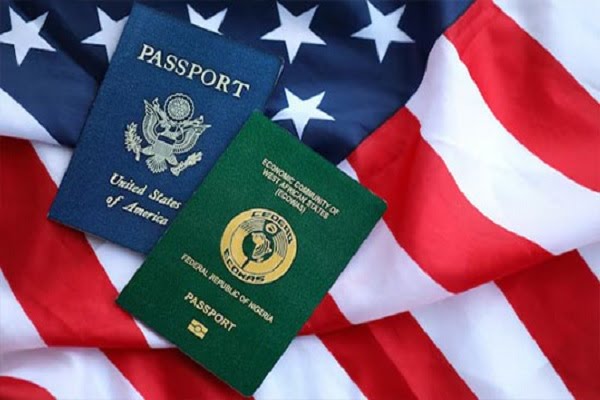
Naturalisation is the official pathway through which foreign nationals become U.S. citizens after satisfying the requirements outlined in the Immigration and Nationality Act (INA). Once granted citizenship, naturalised individuals enjoy nearly all the rights of native-born citizens, including voting.Between 2020 and 2022, the number of Nigerians undergoing naturalisation rose by 58.8%. In 2020, 8,930 Nigerians became citizens, accounting for 1.4% of the year’s 628,258 total naturalisations. By 2021, this number climbed to 10,921—a 22.3% increase—as USCIS addressed delays caused by an 11-week COVID-19 lockdown.
In 2022, the figure surged again to 14,438, the highest on record, representing a 32% rise from the previous year and 3% of the 248,553 Africans naturalised over the three years. Nigeria led African countries in naturalisations, followed by the Democratic Republic of Congo (DRC), which nearly doubled its count to about 6,000. Other African countries were grouped under “All other countries.”Africa registered the fastest growth in naturalisations globally, with a 40% rise from 2021 to 2022.On a global scale, Mexico recorded the most naturalisations (326,237), followed by India (171,114), the Philippines (135,313), Cuba (126,203), the Dominican Republic (81,303), Vietnam (80,177), China (82,376), Jamaica (57,145), El Salvador (52,399), and Colombia (48,396). Together, these ten countries accounted for nearly half of the 2.4 million new U.S. citizens during this period.
Historically, Europeans led naturalisation trends. However, the 1965 INA amendments, which eliminated the national-origins quota system, facilitated greater immigration from Asia and later Africa. Data from the Office of Homeland Security Statistics shows Asia surpassed Europe in the 1970s, and since 2020, Africa has experienced the fastest growth.
African immigrants typically naturalise after a median of six years as lawful permanent residents, compared to the global average of seven.USCIS clarified that “application volumes and approvals do not always move in lockstep,” as some applications are denied or finalized in later fiscal years.
The U.S. naturalisation process, established under the 1952 Immigration and Nationality Act, is overseen by USCIS within the Department of Homeland Security. The agency works with the FBI for background checks and verifies eligibility, including continuous residency—five years, or three if married to a U.S. citizen.According to the Department: “To be considered for naturalisation, an applicant must meet statutory and regulatory requirements and file a Form N-400, Application for Naturalisation, with appropriate documentation.“U.S. Citizenship and Immigration Services conducts an investigation and examination of all naturalisation applicants, which includes completion of security and criminal background checks, review of the applicant’s complete immigration record, interview(s) with oral and written testimony, testing for English and civics requirements, and qualifications for accommodations or disability exceptions.
“Following approval, USCIS schedules applicants for a required oath ceremony before a judge or authorised executive branch official.”Applicants must also be at least 18 years old at the time of filing, hold lawful permanent resident status for at least five years, and have continuously resided in the U.S. throughout that period and up to the time of naturalisation.
Source: /thenationonlineng.net/






